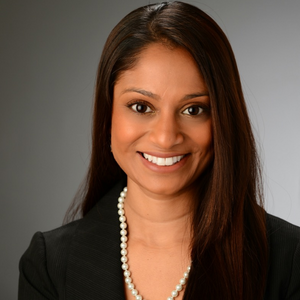Women in Tech: Building Confidence and Visibility
 By Melissa J. Anderson (New York City)
By Melissa J. Anderson (New York City)
Friday’s 85 Broads NYC Internet Week panel “Hot & Bothered: It’s Time To Change The Gender Ratio in New Media & Tech” tackled the myth that there just aren’t that many women in the tech space. Moderator Rachel Sklar, Editor-at-Large at Mediaite, explained that she meets a lot of female leaders in the tech space, but they just aren’t getting recognition.
Panelists included Esther Dyson, angel investor, tech industry pioneer, and journalist; Michelle Madhok, founder, SheFinds Media; Alexa Hirschfeld, co-founder, PaperlessPost; and Joanna Stern, contributing editor, Engadget.
Sklar said she decided to put the panel together after reading New York Magazine’s recent piece “Tweet Tweet Boom Boom: How Tech Startups Like Foursquare and Meetup Are Trying to Overthrow Old Media and Build a Better New York,” Sklar said, “The ratio in the New York Magazine piece – 53 people and 6 female – didn’t reflect my experience, socially, in this space.”
In fact, as Sklar wrote in her Mediaite article:
“If only 6 out of 53 featured NYC tech superstars are women, then are we using the wrong criteria? And by ‘we’ I mean the royal we – we the media, in the criteria we are using to assess ‘success,’ and in how we the industry are looking to galvanize, recruit and train. I would venture to say yes — below the surface… there is a robust presence of women — more than 12%, at least! — making things happen and contributing to the whole. If the data is there, and the resources are there, then all that remains is to do something about it.”
The women are there, she says. Why aren’t they being recognized?
For one thing, as Stern said, “When you are working with men, sometimes, because you’re a woman, your idea is associated with you being a woman.” And, apparently, not with being a highly qualified, subject matter expert.
Dyson explained, sometimes the female voice just gets ignored – though not necessarily on purpose. She said, “I sit on boards – a lot of them. Most of them are full of men.” She continued, “That female voice… may have some frequency problem.” She recalled a teleconference in which she participated. Instead of speaking her opinions, she typed them – and her views received a much greater response than was usual. “It was fascinating,” she said.
Why the gender divide? Is the tech industry a middle school homecoming dance?
NCWIT Research on Women in IT
In fact, the bias these women described is similar to the experiences of women across the IT industry – last week, the National Center for Women in Technology presented the results of its report Women in IT: The Facts (which we covered in January of this year).
Dr. Catherine Ashcraft, leader of the study, discussed the results of research by Frank Flynn, associate professor of organizational behavior at Stanford University’s Graduate School of Business. Flynn presented the students of one class a case study about Heidi Roizen, a Silicon Valley executive, venture capitalist, and entrepreneur. In another section of the course, he provided the same case study to his students, changing the name “Heidi” to “Howard.”
According to the Stanford Graduate School of Business, Flynn said: “…Before class, I had the students go online and rate their impressions of ‘Roizen’ on several dimensions.” He continued:
“As you might expect, the results show that students were much harsher on Heidi than on Howard across the board. Although they think she’s just as competent and effective as Howard, they don’t like her, they wouldn’t hire her, and they wouldn’t want to work with her. As gender researchers would predict, this seems to be driven by how much they disliked Heidi’s aggressive personality. The more assertive they thought Heidi was, the more harshly they judged her (but the same was not true for those who rated Howard).”
The study is a good example of unconscious bias – in this case, bias against assertive women. According to Ashcraft, two million people in the US leave their jobs each year “due solely to unconscious bias.”
Another type of unconscious bias Ashcraft discussed is stereotype threat – “fear that our performance will negatively affect stereotypes about the group.” For example, a woman may choose to take fewer risks because she fears that if she fails, her performance may negatively effect views of women in general.
Overcoming Bias Issues – Be Confident, Make Women More Visible
Leaders and managers can do a lot to overcome these issues. For example, said Ashcraft, stereotype threat can be assuaged by expressing confidence. “Just don’t assume that everyone knows how awesome they are,” said Ashcraft. Let people know when you feel they are competent.
Dyson said, “The biggest mistake boils down to self confidence.” She explained that while men are focused on what they want to achieve, women are often more focused on what they think people want. She encouraged women to take more risks – to get over a fear of failure.
“My advice for people is never take a job for which you are qualified – then you can’t learn anything.” She continued, “Failure is really liberating, because once you’ve failed you are no longer afraid of doing it. I find people who’ve failed are often more confident.”
Madhok agreed. “I think we need to have in our heads as women, [you can] show up and figure it out,” she said. And she said that women can improve female visibility in the tech space by sharing each other’s stories. She said, “Always refer – tell another woman’s story.” She pointed out that Heidi Messer, co-founder of Linkshare (and a member of the audience), keeps a list of other women to be interviewed or participate in panels.
And, of course, she continued, “I think just being very prepared and very smart.”





